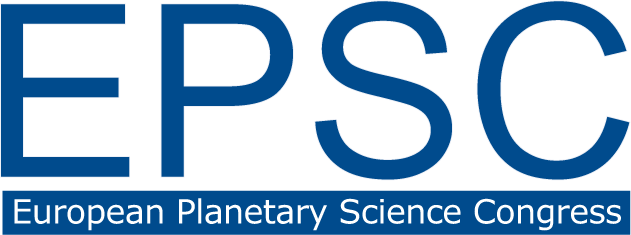ODA – Outreach, Diversity, Amateur Astronomy
Programme group coordinators:
Anita Heward,
Ricardo Hueso,
Padma Yanamandra-Fisher,
Brian Jackson
ODA1
The traditional method of outreach to formal, informal, science and non-science audiences has undergone a fundamental change with recent advances in technology, social media and crowd-sourced data, giving way to citizen science with many applications, including the recent Total Solar Eclipse 2017 (U.S.A.) and 2019 (Chile, Argentina); ground-based pro-am observer synergies for missions (e.g., ESA/Rosetta, NASA/Juno); and self-organized citizen campaigns (comets, moon, etc.). With increasing “Big Data” projects, active partnerships between professional, amateur and data scientist communities are necessary. Innovative design, sustainability and evaluation of these projects is as important as the citizen science they generate. This session builds on these projects and invites papers from scientists, educators and as well as those who design, facilitate, evaluate or fund such programs. Topics may include methodology, applications of citizen science to enhancing outreach, transformative approaches to science education. Presentations are invited from all scientific disciplines of astronomy, planetary and space science, geology and geophysics, seismology, atmospheric and ocean sciences.
Share:
https://meetingorganizer.copernicus.org/EPSC-DPS2019/session/34127
Orals
|
Mon, 16 Sep, 08:30–10:15
Mercury (Room 7+8)
Posters
|
Attendance
Tue, 17 Sep, 17:15–18:45|Level 1
ODA2
Amateur astronomy has evolved dramatically over recent years. A motivated amateur, with his/her backyard instrument and available software is nowadays capable of getting high-resolution planetary images in different wavelengths (better than many professional observatories could achieve 15 years ago). Topics well covered by amateur astronomers include: high-resolution imaging of solar system planets, high-precision photometry of stellar occultations by minor objects and giant planets' atmospheres, satellites' mutual phenomena and high-precision photometry of exoplanet transits. Additionally amateurs use dedicated all-sky cameras or radio-antennae to provide continuous meteor-detection coverage of the sky near their location and they start to contribute to spectroscopic studies of solar system objects.
Hundreds of regular observers are sharing their work providing very valuable data to professional astronomers. This is very valuable at a time when professional astronomers face increasing competition accessing observational resources. Additionally, networks of amateur observers can react at very short notice when triggered by a new event occurring on a solar system object requiring observations, or can contribute to a global observation campaign along with professional telescopes.
Moreover, some experienced amateur astronomers use advanced methods for analysing their data meeting the requirements of professional researchers, thereby facilitating regular and close collaboration with professionals. Often this leads to publication of results in peer-reviewed scientific journals. Examples include planetary meteorology of Jupiter, Saturn, Neptune or Venus; meteoroid or bolide impacts on Jupiter; asteroid studies, cometary or exoplanet research.
Additionally, since July 2016, the NASA spacecraft Juno explores Jupiter's inner structure from a series of long elliptical orbits with close flybys of the planet. To understand the atmospheric dynamics of the planet at the time of Juno, NASA collaborates with amateur astronomers observing the Giant Planet. The collaborative effort between Juno and amateurs is linked to the visual camera onboard Juno: JunoCam. Juno showcases an exciting opportunity for amateurs to provide an unique dataset that is used to plan the high-resolution observations from JunoCam and that advances our knowledge of the atmospheric dynamics of the Giant planet Jupiter. Contribution of amateurs range from their own images to Junocam images processing and support on selecting by vote the feature to be observed during the flybys.
This session will showcase results from amateur astronomers, working either by themselves or in collaboration with members of the professional community. In addition, members from both communities will be invited to share their experiences of pro-am partnerships and offer suggestions on how these should evolve in the future.
Oral and poster presentations are welcome.
Share:
https://meetingorganizer.copernicus.org/EPSC-DPS2019/session/34130
Orals
|
Mon, 16 Sep, 13:30–17:00
Mercury (Room 7+8)
Posters
|
Attendance
Tue, 17 Sep, 17:15–18:45|Level 1
ODA3
The benefits of diversity and inclusiveness in the scientific community are incontrovertible. This session aims to foster debate within the planetary sciences community about the reasons behind under-representation of different groups (gender, cultural, ethnic origin and national) and best practices to make the research environment more inclusive identifying and addressing barriers to equality.
We invite abstracts focusing on: under-representation (gender, cultural, ethnic origin and nationality biases) supported by statistics and data; outreach and education activities to reach broad and diverse audiences, best practices to support inclusiveness; and case studies on mentoring and bias-concerned activities.
Share:
https://meetingorganizer.copernicus.org/EPSC-DPS2019/session/34131
Orals
|
Wed, 18 Sep, 08:30–10:00
Mercury (Room 7+8)
Posters
|
Attendance
Thu, 19 Sep, 17:15–18:45|Level 1
ODA4
Science communicators have an increasingly broad range of tools for reaching diverse audiences, including social media, podcasting, vlogging or mixed/interactive media, as well as more traditional approaches such as public talks, experiments, science festivals, articles or books for both younger and adult audiences. However, widening participation and engaging with under-represented communities can remain a challenge. What lessons can be learned from experiences within different communities? How can we tailor outreach efforts to connect with traditionally under-represented or under-resourced groups? How can limited resources be put to the most effective use? How can we measure the short-term outcomes and long-term impacts of outreach activities? This session is aimed at exploring how planetary science can utilise both novel and rising traditional modes of science communication to engage with a broad range of communities and how the impact of these activities can be evaluated.
Share:
https://meetingorganizer.copernicus.org/EPSC-DPS2019/session/34132
Orals
|
Fri, 20 Sep, 13:30–15:10
Mercury (Room 7+8)
Posters
|
Attendance
Thu, 19 Sep, 17:15–18:45|Level 1
ODA5
Near-Earth Objects (NEOs) are asteroids and comets that travel around the Sun like Earth does, but whose orbits can bring them into Earth’s neighborhood - within 30 million miles Earth’s orbit. In fact, NEOs are comets and asteroids that have been nudged by the gravitational attraction of nearby planets into orbits that allow them to enter the Earth’s neighborhood.
Small asteroids are detected passing between Earth and the Moon’s orbit several times a month. Meteoroids – very small fragments of asteroids and comets – hit Earth’s atmosphere and explode virtually every day, causing the bright meteor events that people see at night and sometimes leaving remnants – meteorites – on the ground.
“Planetary Defence” encompasses all the capabilities needed to detect the potential and warn of asteroid or comet impacts with Earth, and then either prevent them or otherwise mitigate their possible effects. Planetary defence can be considered as “applied planetary science” to address the NEO impact hazard.
Planetary defense involves:
• Finding and tracking near-Earth objects that pose of hazard of impacting Earth;
• Characterizing those objects to determine their orbit trajectory, size, shape, mass, composition, rotational dynamics and other parameters, so that experts can determine the severity of the potential impact event, warn of its timing and potential effects, and determine the means to mitigate the impact; and
• Planning and implementation of measures to deflect or disrupt an object on an impact course with Earth, or to mitigate the effects of an impact that cannot be prevented. Mitigation measures that can be taken on Earth to protect lives and property include evacuation of the impact area and movement of critical infrastructure.
This session aims to present existing Planetary Defence outreach efforts. In addition, a penultimate goal of this session is to invite outreach professionals to introduce already existing programs that would be applicable or leveraged into the communication of Planetary Defence. Such programs do not necessarily need to focus on small bodies or NEOs, but could also be leveraged to Planetary Defence outreach efforts.
Share:
https://meetingorganizer.copernicus.org/EPSC-DPS2019/session/34133
Orals
|
Wed, 18 Sep, 10:30–12:00
Mercury (Room 7+8)
ODA6
This session is dedicated to recent art-science projects inspired by lunar and planetary science and more general ongoing projects that can support exploration, outreach and dialogue with the society. We invite oral talks and posters describing art space programmes or craft, as well as videos, performances and interactive multimedia. Future Moon & Mars villages excite the imagination of artists and citizens at large. The session also includes policy and societal considerations for the Next International Lunar Decade. The session is co-sponsored by ILEWG & IAF ITACCUS committee on Socio-Cultural Utilisation of Space. It will serve as ICEUM14C session for 14th International Conference on Exploration & Utilisation of the Moon.
Share:
https://meetingorganizer.copernicus.org/EPSC-DPS2019/session/34134
Orals
|
Fri, 20 Sep, 10:30–12:00
Mercury (Room 7+8)
Posters
|
Attendance
Thu, 19 Sep, 17:15–18:45|Level 1
ODA8
We celebrate the 100th anniversary of the expeditions by Eddington, Dyson, and colleagues to Principe and Brazil to carry out the observations that verified the predictions of Albert Einstein using his new General Theory of Relativity. The eclipse was on 29 May 1919 and the announcement of the successful verification at a joint meeting of the Royal Society and the Royal Astronomical Society in London on 6 November 1919 changed the course of science and made Einstein an international celebrity, even though the general public did not understand the result. Our session includes two experts on the observations from Principe and Brazil and their subsequent analysis and reanalysis. Also, two colleagues describe the centennial activities on Principe and elsewhere.
Additional papers relevant to the topic would be presented as posters.
Share:
https://meetingorganizer.copernicus.org/EPSC-DPS2019/session/34578
Orals
|
Wed, 18 Sep, 13:30–15:00
Mercury (Room 7+8)
Posters
|
Attendance
Tue, 17 Sep, 17:15–18:45|Level 1
LP6
Late posters Outreach, Diversity, Astronomy (ODA)
Share:
https://meetingorganizer.copernicus.org/EPSC-DPS2019/session/34672
Posters
|
Attendance
Thu, 19 Sep, 17:15–18:45|Level 1


